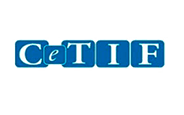T+1 settlement cycle: Risks and impacts for European markets
by Debangita Ghosh

Back in 2014, the Central Securities Depositories Regulation (CSDR) introduced for the first time a requirement for all transactions in transferable securities which are executed on trading venues to be settled by no later than the second business day after the trade date (known as T+2 settlement cycle).
In February 2022, the United States Securities and Exchange Commission (USSEC) shared a proposal which aimed to rule changes to reduce risks (such as credit, market, and liquidity risks in securities transactions faced by market participants and American investors) in the clearing and settlement of securities by shortening the standard settlement cycle for most broker-dealer transactions in securities from T+2 to one business day after the trade date (T+1).
On 28 May 2024 this rule is officially adopted, changing the American settlement cycle from T+2 to T+1.
The Canadian Capital Markets Association in Canada, the Contraparte Central de Valores (CCV) and Mexican Association of Brokerage Firms (AMIB) in Mexico have also announced plans to move to T+1 effective 27 May 2024.
Because of market interconnectivity, on 5 October 2023, the European Securities and Markets Authority (ESMA) released a “call for evidence” to understand the possible impacts that a change from T+2 into T+1 could have in Europe. As mandated by the CSDR Refit, ESMA will publish its final report in Q4 2024[1]; however on 15 October 2024, the Authority released an official statement anticipating that the preliminary findings were positive towards the proposed move to T+1 settlement. As a result, it has agreed to establish a governance structure, together with the European financial industry, to monitor and support the technical preparation of the migration to T+1.
Benefits and Risks of the T+1 settlement cycle
The impacts of T+1 settlement in the securities industry includes several notable aspects
Benefits
- Reduced counterparty risk: With T+1 settlement, the time between the execution of a trade and the settlement is shorter. This reduces the exposure to counterparty risk, the risk that one party in the transaction fails to fulfil its obligations. A shorter settlement cycle minimises the time during which market conditions or financial positions may change, reducing the likelihood of default.
- Increased Liquidity: Faster settlement enhances market liquidity. Investors can access the proceeds from their sales more quickly, allowing them to reinvest or withdraw funds sooner. This can contribute to a more dynamic and responsive market.
- Operational Efficiency: T+1 settlement requires more efficient and streamlined operational processes, as transactions need to be settled within a shorter timeframe. This can lead to improvements in back-office operations and the adoption of more advanced technologies to facilitate faster and more accurate settlement.
- Alignment with Global Standards: Moving to a T+1 settlement cycle would align European markets more closely with global standards and best practices, as many other major financial markets already operate on a T+1 or shorter settlement cycle. This harmonisation is beneficial for international trading, as it reduces the complexities associated with different settlement periods in various markets.
- Enhanced Investor Confidence: Faster settlement cycles could increase investor confidence in the integrity and reliability of the financial markets, as transactions would be settled more quickly and with reduced risk of settlement delays or failures.
Risks
- Operational Challenges for Firms: Firms need to make operational enhancements to meet the demands of the accelerated settlement, posing potential challenges and costs[2]. Firms will have no choice but to apply technology or prepare advanced workforce to maximise returns and handle more loads efficiently. Both implementations would increase costs to comply with the new settlement cycle.
- Post trade activities compressed into shorter time frame: Moving to T+1 would result in the need to complete most of the post-trade processes at trade date, reducing also time available to perform mandatory controls (e.g., provision, cash, inventory, anti-money laundering) and to solve potential issues that would impede timely settlement at T+1[3]. This might lead to settlement fails if market participants are not prepared to complete the process within the two hours which will incur cash penalties under Central Securities Depositories Regulation (CSDR) rules.
- Greater operational complexities within EU counterparties: According to ESMA, shortening the settlement cycle in Europe[4] might be more challenging than in other jurisdictions since Europe has a more complex post-trade landscape with lots of market infrastructures, several currencies, and a common settlement platform (T2S) which does not support all the currencies and in which not all EU central securities depositories (CSDs) participate.
- Securities Lending impact: Moving to a T+1 settlement cycle compresses the timeline to identify and recall securities, which could lead to breaks in the process, resulting in an increase in settlement fails and cash penalties unless there is a modification to existing processes, technology, and overall behavioural changes.
Conclusion
It is important to note that the transition to T+1 settlement may involve changes in market infrastructure, technology, and regulatory frameworks. While there are clear benefits to a shorter settlement cycle, market participants and regulators need to work collaboratively to ensure a smooth transition and address any potential challenges that may arise.
- Operational Enhancements: Firms need to upgrade their operational processes to meet the demands of the accelerated settlement cycle. This involves streamlining internal workflows and adopting advanced technologies to ensure efficient and accurate settlement.
- Technology Adoption: Technological advancements will play a pivotal role in facilitating shorter settlement cycles. As settlement cycles become compressed, automation and digitization will be crucial to ensure efficient trade processing and seamless coordination among various market participants. New technologies, such as distributed ledger technology (DLT)[5] and blockchain, hold promise in enhancing transparency, reducing settlement times, and minimising operational risks.
- Risk Mitigation Strategies: Recognising the potential risks associated with the accelerated switch to T+1 settlement, firms are developing robust risk mitigation strategies. This includes addressing the increased risk of failed trades and compulsory buy-ins due to the shortened settlement timeframe.
- Collaboration and Information Sharing: Firms will need to engage in collaborative efforts within the industry to share insights and best practices related to T+1 settlement readiness. This collaborative approach aims to ensure a smooth transition and address challenges collectively.
The move from T+2 to T+1 settlement has already gained traction in various regions. Canada, and Mexico have announced plans to transition to T+1. India completed its shift to T+1 settlement in 2023, providing valuable learnings for other jurisdictions considering similar changes settlement. Europe, as a major player in the global financial landscape, must carefully consider its approach to settlement cycle reduction. Overall, T+1 will clearly be a good thing for the industry, significantly lowering risks and boosting investment opportunities. But the companies that are truly unprepared will experience serious impacts to their operational efficiency and their bottom line.
For more insights and guidance to achieve T+1 settlement cycle, feel free to reach out to Parva Consulting’s team to explore how we can assist you with your regulatory and operational needs.
[1] before the given legislative deadline of 17 January 2025.
[2] According to ESMA feedback assessment, out of 81 respondents Most of the respondents provided feedback that have indicated that it is difficult to quantify costs, as this would highly depend on the way in which T+1 would be mandated. Only two respondents (both credit institutions) have provided confidential information on the cost they would incur in a shift to T+1. One of them has indicated that adapting its business to T+1 would imply dozens of millions of euros, the other one has indicated one-off costs of approximately EUR 3M and on-going costs of EUR 0,5M annually. Some respondents have differentiated between one-off/short term costs, related to investments in shortening IT processes and procedures, and on-going/longer term costs related to pre-matching, which will require availability of IT systems and personnel.
[3] The Association for Financial Markets in Europe (AFME) actually estimates that moving from two days to one day would significantly reduce the available post-trade processing time from 12 hours to 2 hours which would reduce post-trade operational timeline by 83%.
[4] According to European Fund and Asset management association (EFAMA) memo issued in August 2023, there are 29 central securities depositories (CSDs) in Europe meanwhile there are only 2 central counterparties (CCPs) in the United States
[5] DLTs is a financial instrument that allows information to be stored securely and accurately using cryptography. The data can be accessed using “keys” and cryptographic signatures. Once the information is stored, it can become an immutable database; the rules of the network, written into the coding of the database programming, govern the ledger. Because they are decentralized, private, and encrypted, distributed ledgers are less prone to cybercrime.
Share this article:

Market Data: what they are and why it is important to know how to manage them

Best Wishes

Blockchain: a real revolution?










